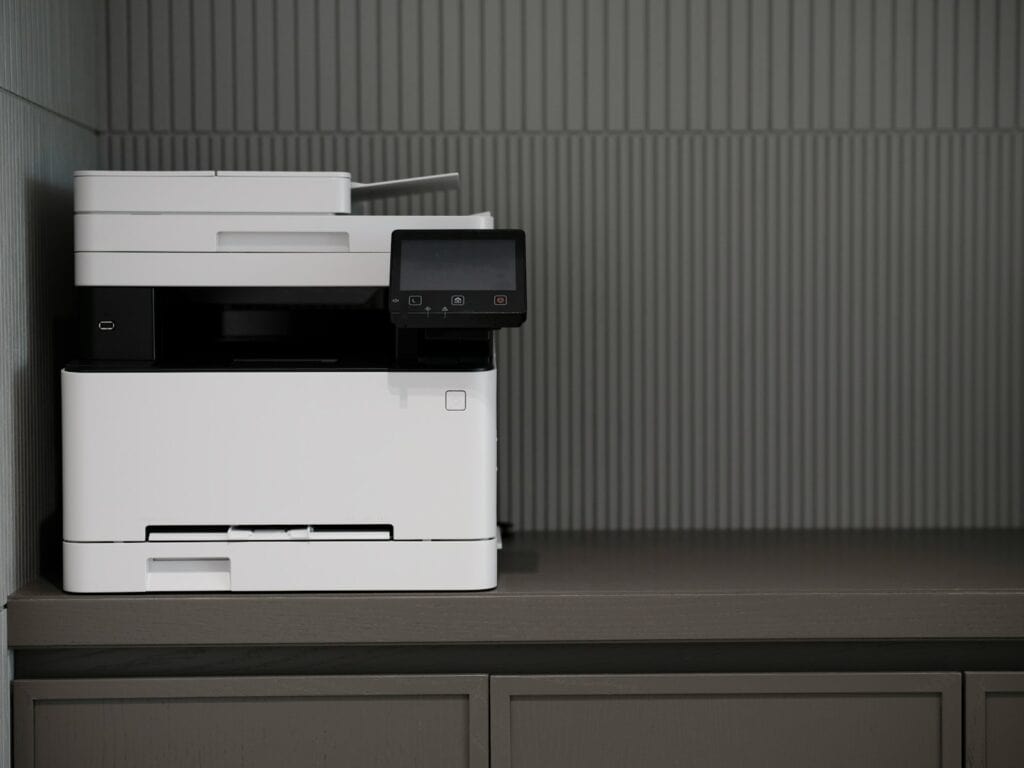Printer problems after macOS updates can be frustrating for Mac users. When your printer suddenly stops working, it might be due to compatibility issues with the new operating system version. Resetting your printing system or updating printer drivers often solves most macOS printing problems without requiring technical expertise.
Many Mac users experience printer issues after updates like macOS Sonoma or Sequoia. These problems typically involve printers that worked perfectly before the update but suddenly fail to connect or print documents. The good news is that fixing these issues usually requires just a few simple steps in your System Settings.
Specific printer brands like Epson seem particularly affected by recent macOS updates. The solution might be as simple as adjusting Local Network settings or granting proper permissions to printer-related applications. These quick fixes can save you from unnecessary frustration and help you get back to printing quickly.
Troubleshooting Guide: Fixing a macOS Printer That’s Not Working
It can be incredibly frustrating when your printer refuses to cooperate with your Mac. This guide will walk you through a series of steps to diagnose and resolve common macOS printing issues. Start with the simplest solutions and work your way through more advanced troubleshooting.
Phase 1: Quick Checks & Basic Solutions
- Check Physical Connections:
- Power: Ensure your printer is plugged into a working power outlet and turned on. Look for any indicator lights.
- Cables: If using a USB cable, make sure it’s securely connected to both your printer and your Mac. Try a different USB port or cable if possible.
- Network Connection (Wi-Fi or Ethernet):
- Wi-Fi: Verify that both your Mac and printer are connected to the same Wi-Fi network. Check the printer’s display or configuration settings for its Wi-Fi status. Restart your Wi-Fi router.
- Ethernet: Ensure the Ethernet cable is securely plugged into both your printer and your router or network switch. Check the link lights on both devices.
- Restart Everything:
- Printer: Turn off your printer, wait about 30 seconds, and then turn it back on.
- Mac: Restart your Mac by going to the Apple menu () > Restart.
- Router/Modem: If the issue seems network-related, restart your router and modem. Unplug them, wait a minute, plug the modem back in, wait for it to connect, and then plug the router back in.
- Check Ink/Toner and Paper:
- Ensure your printer has sufficient ink or toner. Low levels can sometimes prevent printing.
- Make sure there is paper loaded correctly in the paper tray and that there are no paper jams. Consult your printer’s manual for instructions on clearing jams.
- Check the Printer Queue:
- Go to System Settings (or System Preferences) > Printers & Scanners.
- Select your printer in the left-hand sidebar.
- Click the “Open Print Queue…” button.
- If there are any jobs stuck in the queue, select them and click the “Delete” (X) button. Sometimes a stuck job can prevent new jobs from printing.
Phase 2: Software and Driver Troubleshooting
- Verify the Correct Printer is Selected:
- When you go to print a document (File > Print…), make sure the correct printer is selected in the “Printer” dropdown menu. You might have multiple printers installed.
- Add the Printer Again (Remove and Re-add):
- Go to System Settings (or System Preferences) > Printers & Scanners.
- Select your printer in the left-hand sidebar.
- Click the “–” (minus) button at the bottom to remove the printer.
- Click the “+” (plus) button to add the printer again.
- macOS should automatically detect nearby printers. Select yours and click “Add.”
- If your printer isn’t automatically detected, you might need to add it by IP address or hostname (for network printers). Consult your printer’s manual for this information.
- Update Printer Drivers:
- While macOS often includes generic drivers, it’s best to use the latest drivers from the printer manufacturer.
- Visit the support or downloads section of your printer manufacturer’s website (e.g., HP, Canon, Epson, Brother).
- Search for your specific printer model and download the latest macOS drivers.
- Follow the installation instructions provided by the manufacturer.
- After installing the drivers, you might need to remove and re-add the printer as described in step 6.
- Reset the Printing System (Use with Caution):
- Warning: This will remove all your configured printers and print queues. You will need to add your printers again afterward.
- Go to System Settings (or System Preferences) > Printers & Scanners.
- Right-click (or Control-click) in the empty space in the printer list on the left.
- Select “Reset printing system…”.
- You will be prompted to confirm. Click “Reset.”
- After the reset, restart your Mac and then add your printers again.
Phase 3: Network-Specific Issues
- Check Printer’s Network Configuration:
- Consult your printer’s manual for instructions on how to access its network settings (usually through a control panel on the printer or a web interface).
- Verify that the printer has a valid IP address, subnet mask, and gateway if using a static IP.
- If using DHCP, ensure the printer is successfully obtaining an IP address from your router.
- Try printing a network configuration page from your printer. This often provides valuable network information.
- Ping the Printer (for Network Printers):
- Open the Terminal application (Applications > Utilities > Terminal).
- Type
pingfollowed by the IP address of your printer (e.g.,ping 192.168.1.100) and press Enter. - If you receive replies, it means your Mac can communicate with the printer on the network. If you get “Request timed out,” there’s a network connectivity issue.
- Firewall Issues:
- Occasionally, firewall settings on your Mac or router might block communication with the printer.
- Check your macOS Firewall settings (System Settings > Network > Firewall). Ensure that the printer or related services are not being blocked.
- Consult your router’s manual for information on its firewall settings.
Phase 4: Advanced Troubleshooting
- Test with a Different Application:
- Try printing from a different application (e.g., TextEdit instead of Word). This can help determine if the issue is specific to one application.
- Create a New User Account:
- Sometimes, issues can be related to user-specific settings. Create a new user account on your Mac and try printing from there. If it works, the problem might be with your original user account’s configuration.
- Check Console Logs:
- The Console application (Applications > Utilities > Console) can provide detailed logs about system activity, including printing errors. Filter the logs for “cupsd” (the macOS printing service) or your printer’s name to look for clues. This is more advanced and might require some technical knowledge to interpret.
If the Problem Persists:
- Consult Your Printer’s Manual: Your printer’s manual often contains specific troubleshooting steps for common issues.
- Visit the Manufacturer’s Support Website: Printer manufacturers usually have extensive support resources, including FAQs, troubleshooting guides, and driver downloads.
- Contact Technical Support: If you’ve tried all the steps above and are still having problems, consider contacting the technical support for your printer manufacturer.
By systematically working through these steps, you should be able to identify and resolve most macOS printing issues. Good luck!
Key Takeaways
- Reset your Mac’s printing system or update printer drivers to fix most printing problems after macOS updates.
- Check printer permissions in System Settings and enable necessary apps in Local Network settings to restore functionality.
- Control-click your printer in System Settings to remove and re-add it when troubleshooting persistent connection issues.
Diagnosing Printer Issues on macOS
Finding and fixing printer problems on a Mac requires looking at several key areas. The right settings, tools and drivers can solve most printing issues without calling for technical help.
Understanding Printer Settings
Printer problems often start with incorrect settings. When a printer won’t work, first check if it appears in System Settings. Go to Apple menu > System Settings > Printers & Scanners to see if your printer is listed.
If your printer isn’t showing up, try adding it again. Click the Add Printer button and wait a minute or two for available printers to appear. Sometimes printers don’t show up right away.
For network printers that still don’t appear, try adding them by IP address. This works when your Mac can’t find the printer automatically.
Check print queue settings too. A stuck print job can block other documents from printing. Open the print queue by clicking on your printer in the Printers list and then click “Open Print Queue” to see waiting jobs.
Utilizing macOS Troubleshooting Tools
macOS has built-in tools to fix printer issues. The Reset Printing System option can solve many stubborn problems. To use it, go to System Settings > Printers & Scanners, then control-click in the printers list and select “Reset Printing System.”
Warning: This removes all your printers and print jobs. You’ll need to add your printers again.
For deeper issues, check printer connection:
- For USB printers: Try a different cable or port
- For wireless printers: Make sure your printer is on the same Wi-Fi network as your Mac
- For Bluetooth printers: Check Bluetooth settings
Apple’s built-in Printer Setup Utility can help diagnose connection problems. It’s found in the Applications > Utilities folder.
Updating or Reinstalling Printer Drivers
Outdated or damaged printer drivers cause many printing problems. After a macOS update like Sonoma, your existing printer drivers might stop working correctly.
Visit the printer manufacturer’s website to download the latest drivers for your model. Most major brands offer macOS-specific downloads with instructions.
If installing new drivers doesn’t help, try a complete removal and reinstall:
- Delete your printer from System Settings
- Use the manufacturer’s uninstaller (if available)
- Check for leftover files in Mac/Library/Printers and remove them
- Restart your Mac
- Install the latest drivers from the manufacturer
- Add your printer again
Some printer issues with macOS Sonoma require giving full disk access to certain apps. Check your security settings if problems persist after reinstalling drivers.
Frequently Asked Questions
Mac printer problems can be fixed with simple troubleshooting steps. These solutions help when printers won’t connect or print properly.
How does one troubleshoot a Mac that cannot detect a wireless printer?
First, check that both the Mac and printer are on the same Wi-Fi network. This is a common issue that’s easy to miss.
Make sure the printer is turned on and not in sleep mode. Sometimes printers go to sleep to save power.
Try restarting both the printer and the Mac. This often clears communication problems.
If the printer still doesn’t appear, go to System Settings > Printers & Scanners and click the + button to add the printer manually.
What steps can be taken when experiencing issues with printing on an HP printer from a Mac?
Check for updated HP printer drivers. Old drivers often cause printing problems.
Install HP Smart or HP Easy Start from the HP website. These apps help set up the printer correctly.
Remove and re-add the printer in System Settings > Printers & Scanners. Delete the printer first by selecting it and clicking the – button.
Try connecting with a USB cable if wireless printing isn’t working. This can help identify if the issue is with the wireless connection.
How can I resolve issues with my printer showing as offline on my Mac when it is online?
Restart your printer and wait a full minute before checking if it shows as online.
Check your router and restart it if needed. Connection issues between the printer and router can make the printer appear offline.
Remove the printer from System Settings > Printers & Scanners and add it again.
Make sure the printer’s IP address hasn’t changed. Static IP addresses work better for printers than dynamic ones.
What should be done if there is an issue communicating with the printer from a Mac?
Power cycle all devices involved. Turn off the printer, Mac, and router. Turn them back on one by one.
Check if the printer works with another device. This helps find out if the problem is with the Mac or the printer.
Delete the printer from your Mac and add it again. This resets the connection between devices.
Update macOS to the latest version. Apple often fixes printer bugs in system updates.
How can I reset the printing system on a Mac to resolve printer problems?
Open System Settings > Printers & Scanners. Right-click (or Control-click) in the printer list and select “Reset printing system.”
Confirm the reset when prompted. This will remove all printers and reset all printer settings.
After the reset completes, restart your Mac to finish the process.
Add your printers back one by one. This fresh start often fixes stubborn printer issues.
What solutions are there for a Mac that has recently been updated and now does not print?
Check for printer driver updates from the manufacturer’s website. Older drivers may not work with new macOS versions.
Download and install Gutenprint if your printer is older. This free software supports many printers that lack official drivers.
Try using AirPrint if your printer supports it. AirPrint works without special drivers.
If nothing else works, use Time Machine to restore your Mac to before the update. Then check for known issues before updating again.







